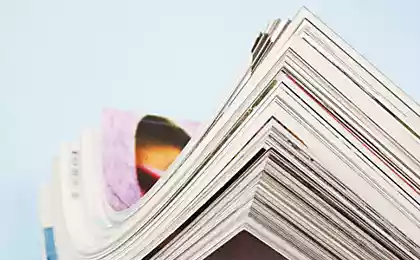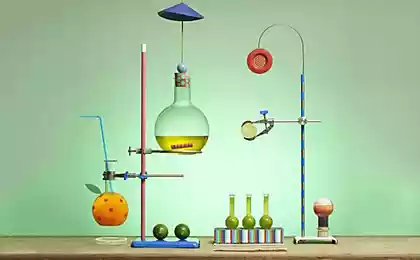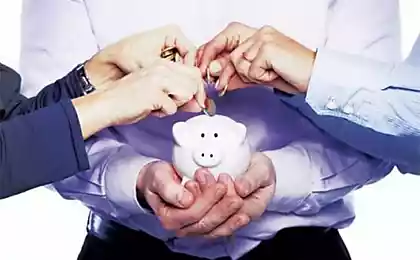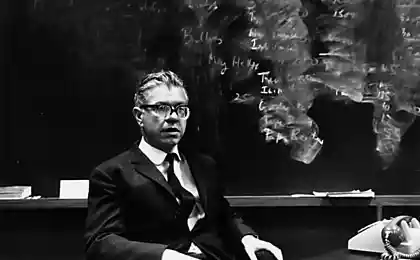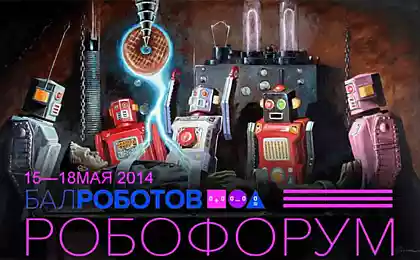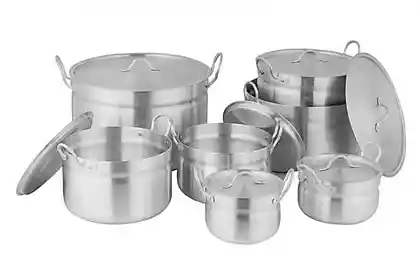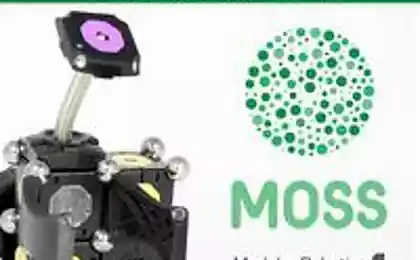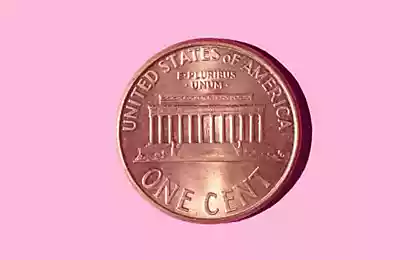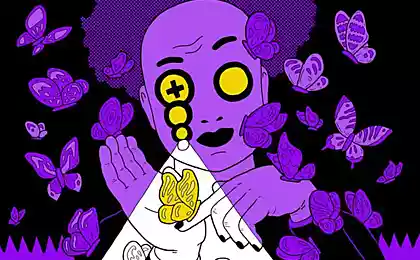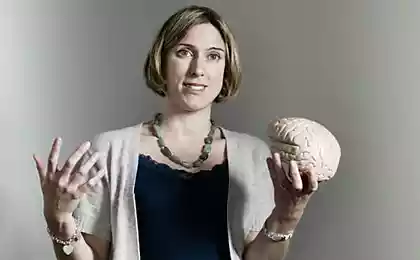727
10 amazing scientific projects created by teens
This list is compiled on the basis of scientific projects submitted by young people in the science fair Google: These teenagers have begun to change the world in an age when many of us were trying to comprehend the basics of geometry in school.
1. Lauren Hodge found that acidic marinades reduce the risk of rakom
After a group of doctors filed a lawsuit against some restaurants and fast food chains, claiming they did not warn customers about the carcinogenic effects of meat cooked on the grill, Lauren Hodge visited idea.
She saw that her mother uses a small amount of lemon juice when marinating meat, so the meat changes color - it made her assume that citrus block the formation of carcinogens: sour pickles have the greatest impact, while the olive oil, for example, makes it worse .
The study brought her prize at the science fair Google, showing that some of the best ideas for research are right under our noses.
2. Daniel Burd brought microbes that eat plastic musor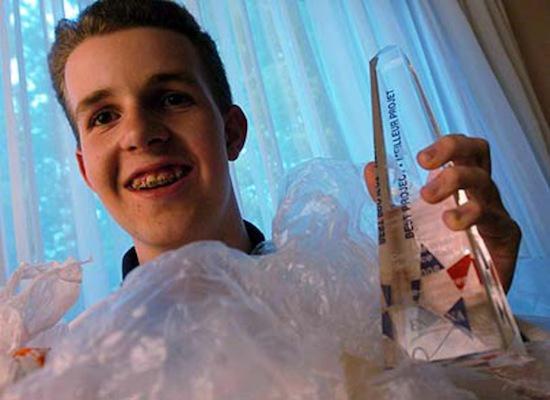
Plastic bags - cheap and convenient, but they pollute the environment: plastic degrades over the years, and this has a negative impact on nature. Canadian schoolboy Daniel Burd wondered why we can not just isolate the organisms slowly "eat" plastic, and increase their concentration in one place to speed up the process - just six weeks of its microbes to reduce the amount of plastic by 43%.
The technology has yet to be improved - it is now engaged leading Canadian environmentalists.
3. Aisha Khar developed technology to produce supercapacitors using them in the future it will be possible to charge akkumulyatory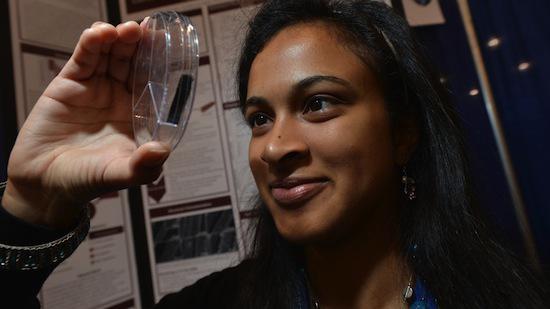
Smartphones today are becoming more sophisticated, but the battery still left much to be desired: the main problem is not that they are discharged, and that subsequently takes a long time to charge them again.
Aisha Khar from Saratoga has developed a supercapacitor, with which the process can be shortened to 30 seconds. Importantly, Khar use it to charge while only a tiny LED instead of a bulky smartphone, but it's a huge step in the right direction.
The project brought Khar $ 50 thousand, and the second place at the exhibition «Intel ISEF 2013».
4. Yamini Naidu has developed a new method of treatment of narkozavisimosti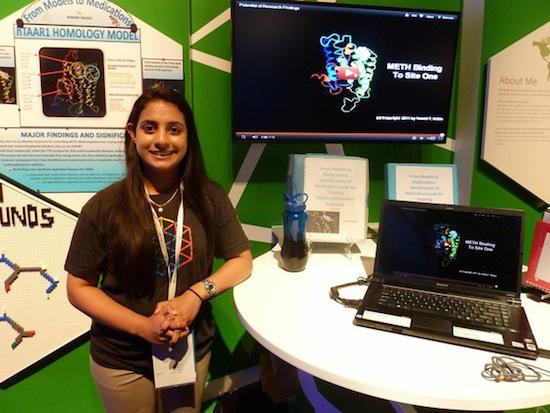
The study Yamini Naidu said that drug addiction affects people at a molecular level, so Yamini use the link between the chemical composition of the brain and addictive behavior to help in the development of a new drug for the treatment of drug addiction.
While some people spend time arguing about whether or not a drug addiction "disease", Naidu use science to combat it: it has allocated a separate receptor to which methamphetamine linked in the brain, and suggested a way to block this process.
5. Marc Roberge found a way to destroy anthrax yazvy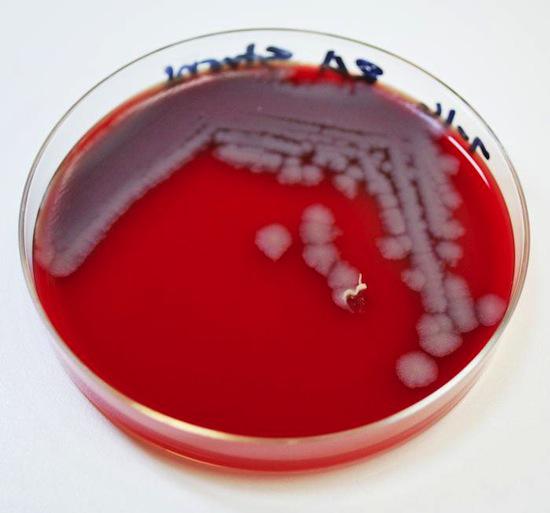
Marc Roberge found that coarse meal can kill anthrax spores directly into the envelope without damaging its contents - in other words, the evidence seems written on the envelope by hand text or fingerprints remain the offender, and the strain disappear.
Of course, the 17-year-old is not used to directly study anthrax, because it is prohibited by law - instead he explored the same strain, hay bacillus, giving biotech company «SGM Biotech». Bacillus subtilis is closely related to anthrax, and is often used in research as an alternative, in addition, it is more heat-resistant, which adds additional weight Roberge conclusions.
6. Jonas Cohn opened the way how deaf people can start slyshat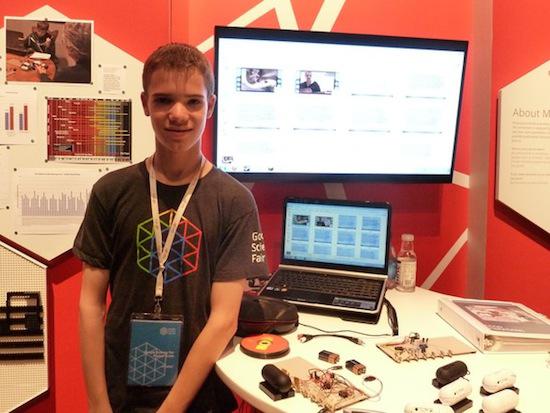
Jonas Cohn opened a way to teach deaf people to hear sounds, while playing the guitar - he bit the neck of his guitar, the sound passed through the teeth in the skull, and his eardrums were able to catch.
Kohn suggested that the vibrations of sound can greatly enhance the sound itself, and deaf people will be able to hear if the sound will go through their bones.
He has developed a device that sends sound directly to the brain via the tactile sensors - "speaker" at your fingertips, some of the subjects reported a significant increase in its ability to hear the sound of, on average, this has increased the possibility of people 95%.
7. Sri Bowes find out why chemotherapy does not help cancer yaichnikov
Ovarian cancer - one of the five leading causes of death among women from cancer. The complexity of the treatment is that the type of cancer cells, resulting in the ovary, resistant to chemotherapy.
16-year-old American of Sri Bowes determined that cells resistant to treatment makes the enzyme AMP-activated protein kinase.
Now Bowes studies at Harvard and is considered one of the 20 most promising students - the results of its investigations may be of great importance in the study of cancer.
8. Eric de BENEDICTIS opened cheapest way to move in kosmose
Now Eric de BENEDICTIS is a student at Caltech, but she was only 14 years old when, during a family trip to Cape Canaveral, she realized how really huge and interesting space.
His interest she directed at solving one of the biggest challenges of travel in outer space - the problem of fuel.
The only known source of fuel is in the world, so the more we move away from earth into space, the more expensive it becomes fuel: even the transportation of additional fuel supply to the spaceship in turn requires even more it.
We have already heard proposals to mine fuel on asteroids or use it as solar energy, de BENEDICTIS also offers the spaceship moves with the help of the gravitational field and the forces generated by the motion of the planet - a way similar to how to move through the water by the wind sailing ships. < br />
De BENEDICTIS believed that we could use such "spatial fluctuations" rather than fuel for spacecraft. For his concept she won first place in physics at the conference «ISEF» in 2010 year, and now is studying computer science.
9. Estaing LaChapelle has developed a cheap prosthesis ruki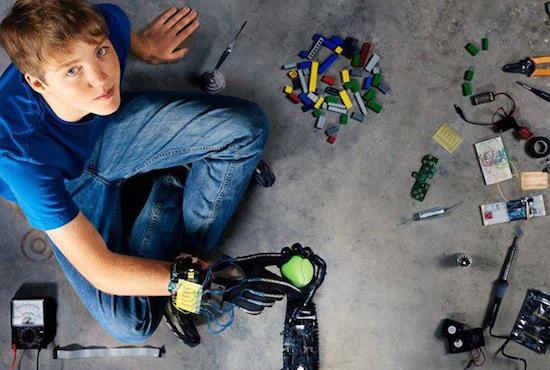
Esten LaChapelle originally from Colorado, and, according to his own words, he likes to build things.
He used the 3D-printing technology to create a low-cost prosthetic hand after he met with the girl, whose own robotic arm cost $ 8 thousand - made Lachapelle hand is worth only $ 250, and can perform the same functions.
He took second place at the International Science and Engineering Fair and Intel demonstrated his invention at the White House at the science fair with the participation of US President Obama.
10. Martin Schneider and Joshua Lee showed how to use competition to improve performance
Martin Schneider and Joshua Lee has a brilliant little project that uses our need to compete with each other: they found that students performed better in educational games, if you play against a fake enemy named "Bob" and not against an unnamed opponent.
Meet the enemy (or at least knowledge of his name) is enough to make a person think of much better - idea to make two 14-year-olds finalists science fair Google.
via factroom.ru
1. Lauren Hodge found that acidic marinades reduce the risk of rakom

After a group of doctors filed a lawsuit against some restaurants and fast food chains, claiming they did not warn customers about the carcinogenic effects of meat cooked on the grill, Lauren Hodge visited idea.
She saw that her mother uses a small amount of lemon juice when marinating meat, so the meat changes color - it made her assume that citrus block the formation of carcinogens: sour pickles have the greatest impact, while the olive oil, for example, makes it worse .
The study brought her prize at the science fair Google, showing that some of the best ideas for research are right under our noses.
2. Daniel Burd brought microbes that eat plastic musor

Plastic bags - cheap and convenient, but they pollute the environment: plastic degrades over the years, and this has a negative impact on nature. Canadian schoolboy Daniel Burd wondered why we can not just isolate the organisms slowly "eat" plastic, and increase their concentration in one place to speed up the process - just six weeks of its microbes to reduce the amount of plastic by 43%.
The technology has yet to be improved - it is now engaged leading Canadian environmentalists.
3. Aisha Khar developed technology to produce supercapacitors using them in the future it will be possible to charge akkumulyatory

Smartphones today are becoming more sophisticated, but the battery still left much to be desired: the main problem is not that they are discharged, and that subsequently takes a long time to charge them again.
Aisha Khar from Saratoga has developed a supercapacitor, with which the process can be shortened to 30 seconds. Importantly, Khar use it to charge while only a tiny LED instead of a bulky smartphone, but it's a huge step in the right direction.
The project brought Khar $ 50 thousand, and the second place at the exhibition «Intel ISEF 2013».
4. Yamini Naidu has developed a new method of treatment of narkozavisimosti

The study Yamini Naidu said that drug addiction affects people at a molecular level, so Yamini use the link between the chemical composition of the brain and addictive behavior to help in the development of a new drug for the treatment of drug addiction.
While some people spend time arguing about whether or not a drug addiction "disease", Naidu use science to combat it: it has allocated a separate receptor to which methamphetamine linked in the brain, and suggested a way to block this process.
5. Marc Roberge found a way to destroy anthrax yazvy

Marc Roberge found that coarse meal can kill anthrax spores directly into the envelope without damaging its contents - in other words, the evidence seems written on the envelope by hand text or fingerprints remain the offender, and the strain disappear.
Of course, the 17-year-old is not used to directly study anthrax, because it is prohibited by law - instead he explored the same strain, hay bacillus, giving biotech company «SGM Biotech». Bacillus subtilis is closely related to anthrax, and is often used in research as an alternative, in addition, it is more heat-resistant, which adds additional weight Roberge conclusions.
6. Jonas Cohn opened the way how deaf people can start slyshat

Jonas Cohn opened a way to teach deaf people to hear sounds, while playing the guitar - he bit the neck of his guitar, the sound passed through the teeth in the skull, and his eardrums were able to catch.
Kohn suggested that the vibrations of sound can greatly enhance the sound itself, and deaf people will be able to hear if the sound will go through their bones.
He has developed a device that sends sound directly to the brain via the tactile sensors - "speaker" at your fingertips, some of the subjects reported a significant increase in its ability to hear the sound of, on average, this has increased the possibility of people 95%.
7. Sri Bowes find out why chemotherapy does not help cancer yaichnikov

Ovarian cancer - one of the five leading causes of death among women from cancer. The complexity of the treatment is that the type of cancer cells, resulting in the ovary, resistant to chemotherapy.
16-year-old American of Sri Bowes determined that cells resistant to treatment makes the enzyme AMP-activated protein kinase.
Now Bowes studies at Harvard and is considered one of the 20 most promising students - the results of its investigations may be of great importance in the study of cancer.
8. Eric de BENEDICTIS opened cheapest way to move in kosmose

Now Eric de BENEDICTIS is a student at Caltech, but she was only 14 years old when, during a family trip to Cape Canaveral, she realized how really huge and interesting space.
His interest she directed at solving one of the biggest challenges of travel in outer space - the problem of fuel.
The only known source of fuel is in the world, so the more we move away from earth into space, the more expensive it becomes fuel: even the transportation of additional fuel supply to the spaceship in turn requires even more it.
We have already heard proposals to mine fuel on asteroids or use it as solar energy, de BENEDICTIS also offers the spaceship moves with the help of the gravitational field and the forces generated by the motion of the planet - a way similar to how to move through the water by the wind sailing ships. < br />
De BENEDICTIS believed that we could use such "spatial fluctuations" rather than fuel for spacecraft. For his concept she won first place in physics at the conference «ISEF» in 2010 year, and now is studying computer science.
9. Estaing LaChapelle has developed a cheap prosthesis ruki

Esten LaChapelle originally from Colorado, and, according to his own words, he likes to build things.
He used the 3D-printing technology to create a low-cost prosthetic hand after he met with the girl, whose own robotic arm cost $ 8 thousand - made Lachapelle hand is worth only $ 250, and can perform the same functions.
He took second place at the International Science and Engineering Fair and Intel demonstrated his invention at the White House at the science fair with the participation of US President Obama.
10. Martin Schneider and Joshua Lee showed how to use competition to improve performance
Martin Schneider and Joshua Lee has a brilliant little project that uses our need to compete with each other: they found that students performed better in educational games, if you play against a fake enemy named "Bob" and not against an unnamed opponent.
Meet the enemy (or at least knowledge of his name) is enough to make a person think of much better - idea to make two 14-year-olds finalists science fair Google.
via factroom.ru

